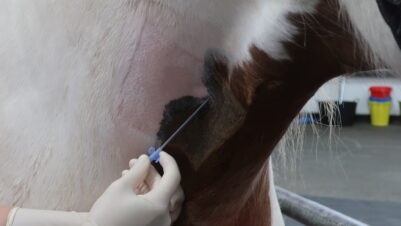IT was the best Christmas present the children could have wished for! Or so said mum. That should have been a great success, shouldn’t it?
Little Tommy the terrier’s blindness wasn’t caused by a brain tumour as I had suggested as a possibility, but rather it was a retrobulbar optic neuritis as shown by the MRI scan. Steroid treatment might well resolve the problem.
But it wasn’t until after the scan that I realised the children had agreed to have a budget festive season to pay for the diagnostic imaging for their beloved pet. And that made me feel bad. Ten or 15 years ago we would probably have considered that both the diagnoses of brain tumour or optic neuritis were possibilities and that a steroid regime could be both diagnostic and therapeutic.
It would tell us through the response to treatment of lack of improvement which of these diagnoses was the more likely. And it would treat the problem if optic neuritis was the correct diagnosis.
Now I grant you that if the MRI scan showed it was a pituitary tumour pressing on the optic chiasm that was the reason for the blindness, we could offer radiotherapy to shrink the mass and restore sight. Even so, such an intracranial mass would not be the diagnosis I would have wanted.
Radiotherapy would be ameliorative for a reasonable time but not ultimately curative. As it is, hopefully oral steroid will have the desired effect and even if it fails to do so, the dog will not die of optic neuritis as it eventually would of a brain tumour.
But I’m worried that the opportunity to undertake complex imaging at a significant cost pushes people to spend more than they have. You might well say it is the owners’ decision whether to go ahead with such costly diagnostics, not ours, but are we potentially piling a guilt trip on them if we offer such opportunities beyond their grasp?
As I write this I can hear you saying, quite rightly, that I’m being overly paternalistic – who am I to decide what the owners can afford and where they should put their finance?
Their dog is still blind but they can rest assured that he is not going to die of a brain tumour. And as the mum of the family said, that is worth a huge amount to both the parents and their children for whom Tommy is a key member of the family.
But maybe I could have suggested that a steroid treatment regime at 10p a day would be sensible to start with in an uninsured pet, before going to a scan at five thousand times that amount if and only if the medication was ineffective.
The dilemma
The issue is not just for the owners, of course. As vets these days perhaps we are not prepared to settle for a cheap therapeutic trial if a definitive diagnosis is possible at a price. We have the upmarket equipment to hand and surely it is right to use it? Or is it that when you have a hammer, everything looks like a nail?
My worry you see is that our keenness to use these modern diagnostic techniques might sway us to suggest them rather more than we might once have done.
Now please don’t get me wrong. The service at referral centres such as Cambridge vet school where I do a lot of my work is truly fantastic, nothing less. Perhaps I can illustrate with a second case, this time one where we did find a pituitary tumour in a suddenly blind boxer.
The dog had been referred from a local practice as an emergency and I’m glad to say we could arrange an MRI scan the same morning. Once we had shown that a pituitary macroadenoma was to blame, the dog had its first session of fractionated radiotherapy that afternoon. A few days later, sight was restored.
It was only when the owner came to pick up his pet at the end of its first day with us that he told me he was an orthopaedic surgeon at a local human hospital. He was simply flabbergasted by the level of service he and his boxer had received – neither in his NHS workplace nor even in the private BUPA hospital where he also worked would a patient have received such co-ordinated and rapid care.
Maybe these days, comparing ourselves with the NHS isn’t exactly setting the bar very high, but it was good to be able to congratulate everyone who had worked so brilliantly as a team to provide such a service.
I wonder if we all end up working too hard to be able to sit down at the end of each day and reflect on what we have done.
Socrates I think said that the un-reflected life is not worth living. And to tell you the truth writing these little perambulations certainly helps me reflect on what has happened over the past month.
I’ve just completed a two-year part-time Masters in Education, and one thing that has shown me is that the teachers can show us a lot about how to be a reflective profession.
True, these days students are encouraged to write reflective journals on their EMS, but those of us who wouldn’t have had a clue what EMS meant when we undertook our 26 weeks of seeing practice aren’t particularly pushed to reflect at the end of each day on the things that went right and those that didn’t.
Maybe it’s only by having such a reflective practice that we can seek to improve our outcomes, for the animals and owners we treat, the people we work with and ourselves as well in 2016.










